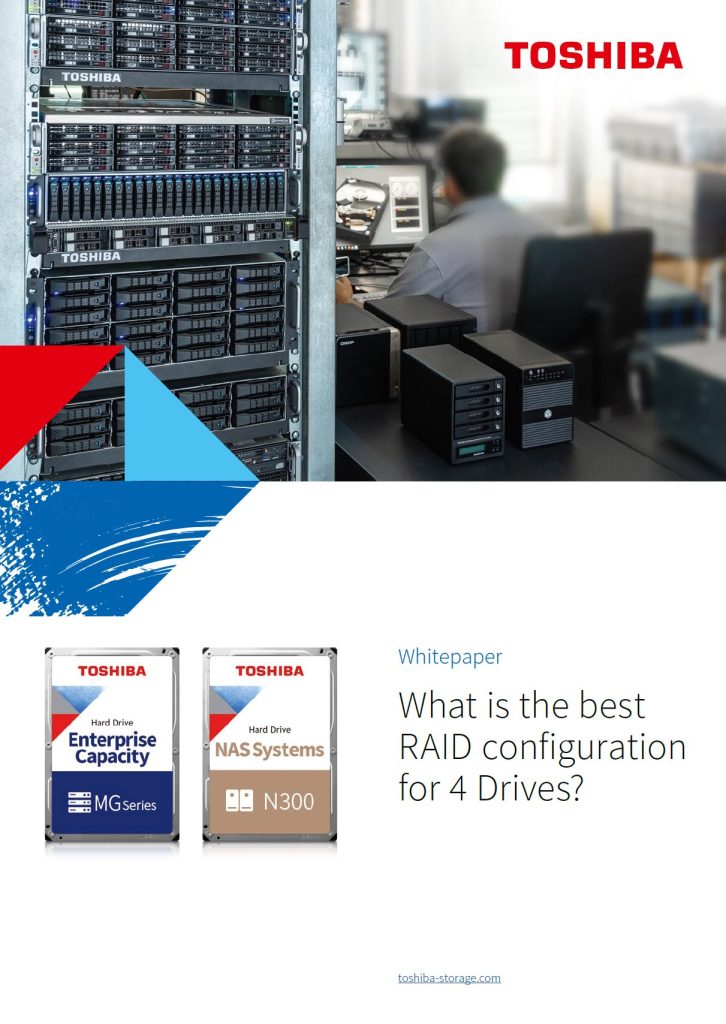What is the best RAID configuration for 4 Drives?
RAID systems are popular: companies, small business and private individuals use them for their individual use cases to protect valuable data from storage media failures and for the additional benefits they offer. These may include cost-effectiveness, enhanced performance over the single Hard Disk Drive (HDD) and increased resiliency, depending on the RAID configuration you choose.
RAID stands for Redundant Array of Independent (or Inexpensive) Disks. This technology combines several smaller drives into one larger storage space, with some redundancy like parity or mirroring of data, so that if a drive is failing, the data can be restored from the remaining drives after the failing drive is replaced.
But what is the best RAID configuration for NAS, USB-RAID box, RAID controller, or software defined storage? Which specifications are helpful and how much influence has the individual use case on selection?
This whitepaper provides some answers, based on fact-driven evaluation data from the Toshiba HDD Laboratory. The Toshiba laboratory ensures a correct test environment, where a typical configuration for smaller storage systems and sub-systems had been set up: Four Enterprise HDDs of 4TB, Toshiba Model MG08ADA400E.
Download the whole article here.
Rainer W. Kaese, Senior Manager Business Development Storage Products at Toshiba Electronics Europe


